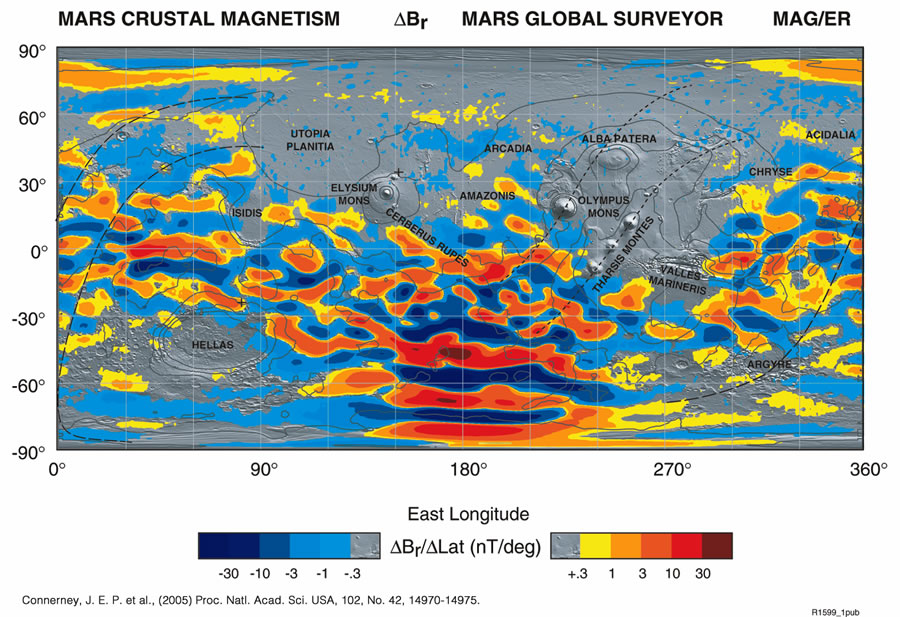Nature News | 25 June 2010
Lithospheric Drift on Early Mars: Evidence in the Magnetic FieldPuzzling 'stripes' generate another controversial origin theory.
After the Mars Global Surveyor (MGS) settled into orbit around the red planet in 1997, a magnetometer on board began sending back measurements that have puzzled planetary scientists ever since. A section of the martian crust appeared to consist of long 'stripes' of iron-bearing minerals permanently magnetized with alternating orientations. Clearly, an ancient dynamo imprinted its field in the rock during the planet's early history. But why the stripes?
Now, Ken Sprenke of the University of Idaho in Moscow, Idaho, has provided a tantalizing theory to explain these stripes: they were created by ancient hotspots beneath the crust. The hotspots would exhume material from the interior that would then 'freeze' with the magnetic field holding sway at the time. Publishing on 20 June in Icarus1, Sprenke points out how the stripes recall a famous, elongated feature made by a hotspot on Earth: the Hawaiian islands. Like teeth on a comb, the hotspots, moving slowly underneath a hard crustal shell, could have left the long, parallel tracks seen in the magnetization maps of MGS. "There could easily have been dozens of hotspots back then," Sprenke says of the first half-billion years of the planet's existence, when the magnetic dynamo — molten iron circulating in the planet's core — was probably active.
Sprenke found that the stripes, tracing out parallel arcs, fall into two families, each defining a distinctive pair of poles. He argues that these ancient magnetic poles — with an episode of polar wandering in between — represent the spin axis for the planet at the time. Finally, Sprenke, needing a mechanism to drag the crust over the hotspots, claims that Mars, in this early epoch of the Solar System, may have captured some satellites. These satellites, he says, could have exerted a gravitational tide that slowed down the crust relative to the hotspots in the interior. Intriguingly, 7 of the 15 giant impact basins on Mars — presumably created as the putative satellites later collided with Mars — fall along equators of the two poles fixed by the magnetic stripes. "We weren't expecting to see that at all, and it just worked out like that," he says.
- Icarus (in press 20 June 2010), doi: 10.1016/j.icarus.2010.06.015
NASA | geology.com | 12 Oct 2005
